GERMANY’S reputation as tournament football’s greatest nation has taken a battering in recent years.
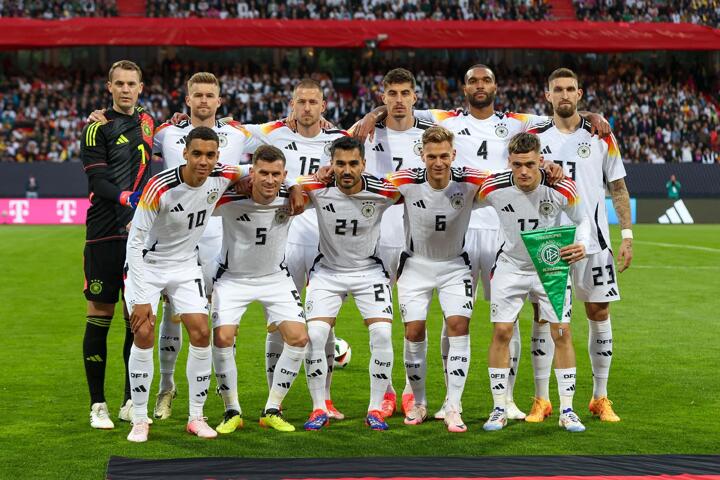
At Qatar 2022 the Nationalmannschaft went out at the group stage for the second World Cup in a row, having lost in the last 16 to England at Euro 2020 in between the two.
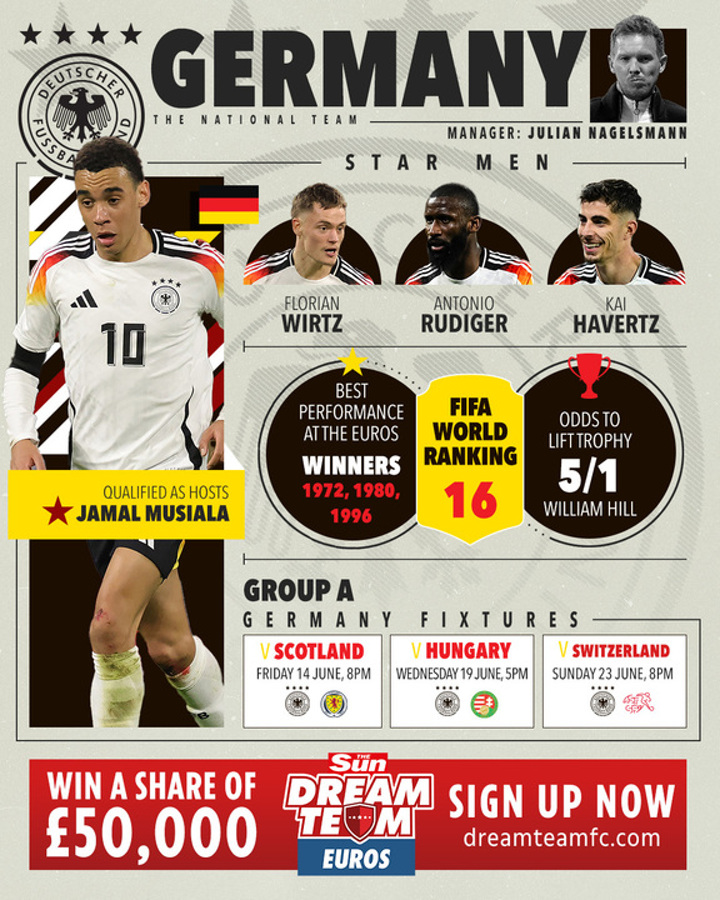
So when Julian Nagelsmann took over last autumn, expectations were at their lowest for some time.
But hosting a big competition brings back happy memories for German fans.
They won the 1974 World Cup on home soil, finished third under Jurgen Klinsmann in the game-changing 2006 tournament, and reached the semis of Euro 1988.
And there have been recent signs of improvement.
After disappointing friendly defeats by Turkey and Austria in November, Germany beat World Cup runners-up France and Qatar quarter finalists Holland in back-to-back games in March.
They were Toni Kroos’ first matches back following his decision to return from three years in international retirement.
Kroos, 34, brings experience, quality and grit to a midfield that has lacked all three.
The backline remains a bit of a concern, however, and Germany’s best form of defence may be attack.
Their impressive options include Florian Wirtz, fresh from helping Bayer Leverkusen win their first Bundesliga title.
Germany play Scotland in the opening game of Euro 2024 on 14 June at Munich’s Allianz Arena.
Manager: Julian Nagelsmann
Bright, young boss and a bit of a maverick. Known for his flashy outfits and arriving for training on a skateboard.
Nagelsmann, 36, was appointed as Hansi Flick’s successor in September 2023.
His masterstroke was to talk Kroos back into the fold, after the Real Madrid man had retired from international football in 2021.
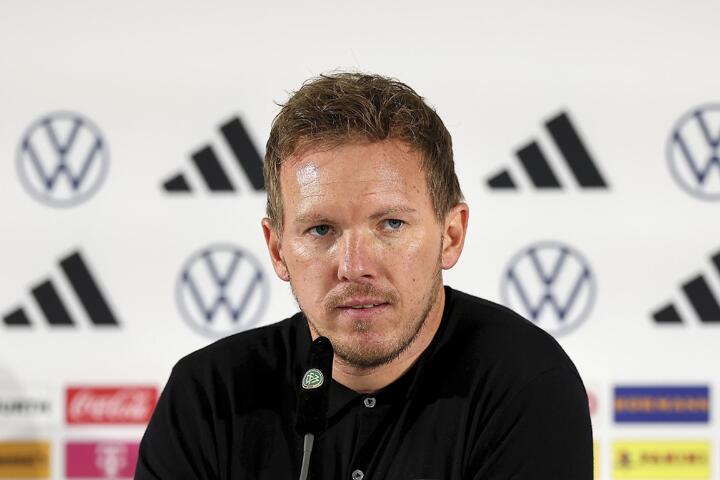
Key Man: Jamal Musiala
Still only 21, Musiala can make things happen out of nothing.
Maybe the disappointment of Bayern Munich’s season will spur him on to greatness.
The former Chelsea academy star is one of the most creative players on show at Euro 2024.
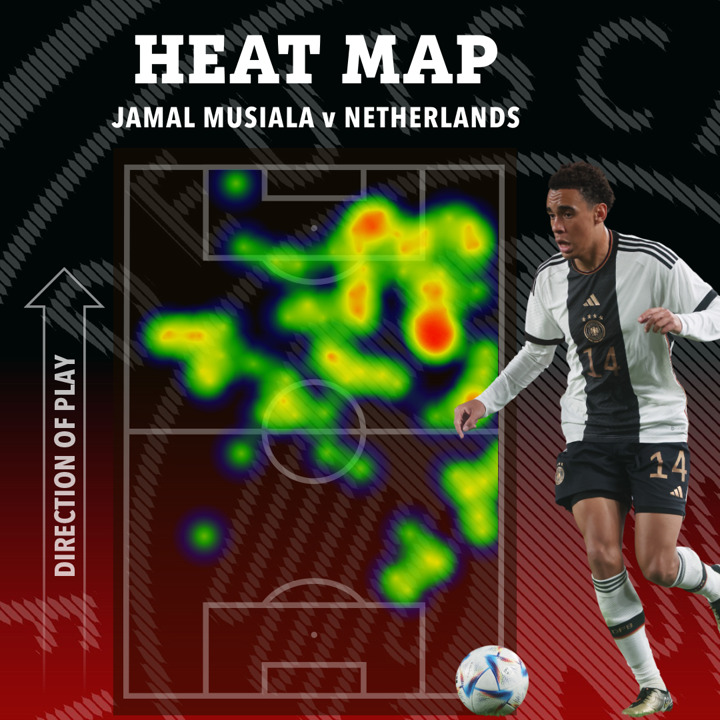
Likely line-up
Nagelsmann has yet to decide on a settled formation.
He used a back three against Austria in November, before opting to go four at the back in a defeat to Turkey – with Kai Havertz at left back.
Recently however he has gone for a 4-2-3-1 formation, with Kroos and Robert Andrich in front of the back four, and three attacking midfielders.
He can chose between Niclas Fullkrug of Borussia Dortmund and Arsenal star Havertz as lone striker.
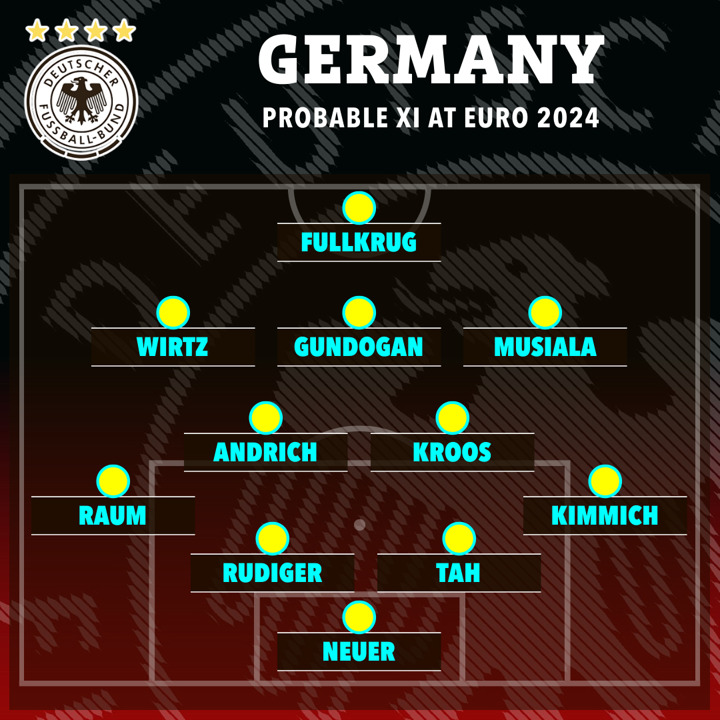
How they attack
Germany will be very structured in their build-up with an emphasis on creating situations that allow them to dominate the ball from the middle of the park.
This is generally achieved by the two deepest midfielders who will look to take up positions to support the attack.
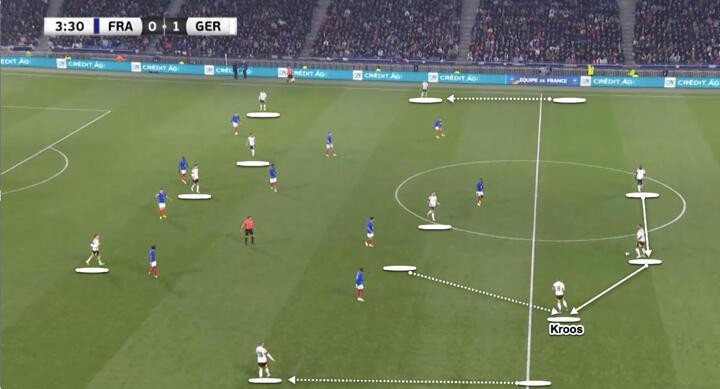
As Germany are building the attack Kroos likes to drop from the midfield back to take the ball off the defence to help with ball progression.
When the ball is out on the wing, Germany will look to overload the ball side of the pitch with revolving triangles and passing options to help the player in possession.
But this overload creates space on the far side, away from the ball, that can be exploited through a quick cross-field ball.
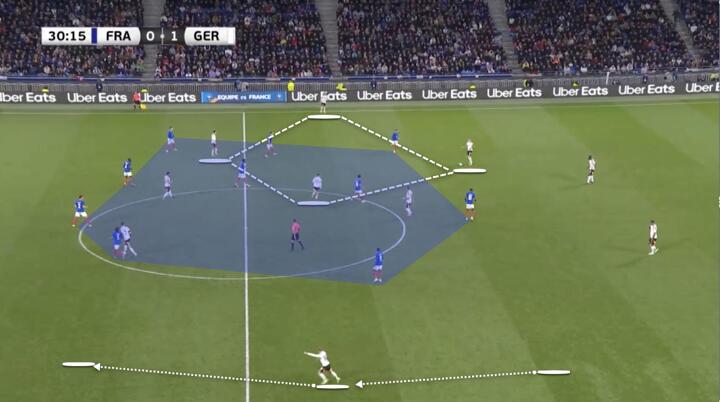
These angles and passing triangles mean that the man in possession will have options to play through.
But it also means that the player on the far side is left in acres of space.
As Germany attack they have options – pass their way through the congested area of the pitch or to switch the play and attack the space behind the opposition defence.
And with the creative talents of Wirtz, Musiala and Ilkay Gundogan in midfield, they have the ability to unpick any opposition.
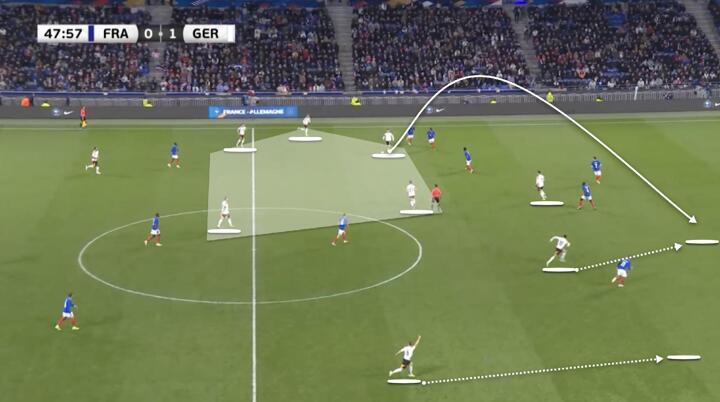
How they defend
Defensively we will see Germany working hard to protect and shut off the centre of the pitch.
Because of their likely structure of play as 4-3-2-1, the two deeper midfielders will hold the base of the defensive shape.
The three more attacking midfielders and the striker position themselves in more of a narrow shape to stop the opposition from being able to play through the middle.
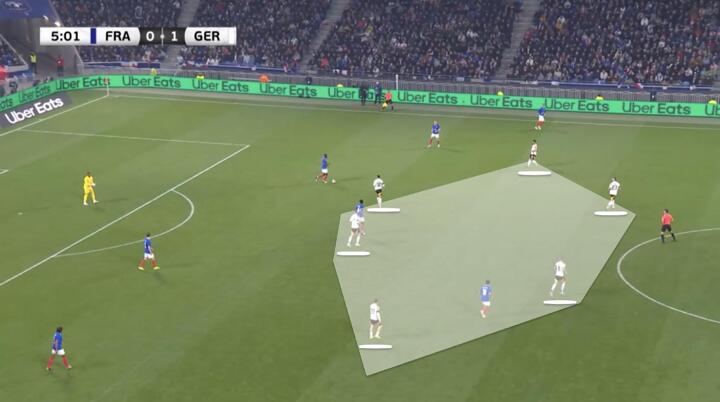
By working in this way to prevent the opposition from playing through the centre of the pitch they are trying to force the opposition either out wide, where they can press against the line, or long where they can win the duel.
As Germany force their opposition to pass wide to try to play around the defensive block we will then typically see the Germans press out.
The midfielders and the fullback on that side of the pitch look to engage the ball carrier to try to win the ball back high.
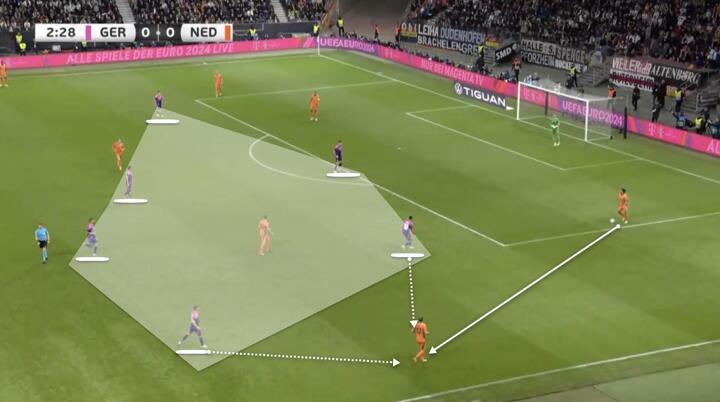
The passes from the opposition to move the ball will then be immediately pressed as Germany use the touchline as an extra defender to try to regain the ball.
Germany have a very proactive and effective form of defending as they look to choke off the pitch in a medium to high defensive block and win the ball back high.
Indeed, defending in this way is likely to be one of the most used defensive systems at the tournament as teams try to protect their defensive line at all costs.
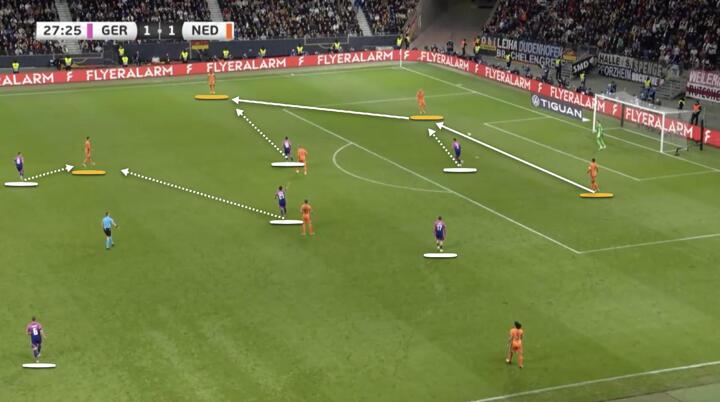
Prediction
Should Germany win Group A, they’ll face the runners up of England’s Group C.
If they get through that last-16 game, the likely opponent are the Group B winners, which many expect will be Spain.
Then it’s a potential semi-final against the likes of Portugal, Netherlands, or Slovakia.
And the final could pit Germany against the likes of France or England.









